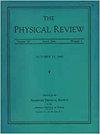Collective effects in flow-driven cell migration
引用次数: 0
Abstract
Autologous chemotaxis is the process in which cells secrete and detect molecules to determine the direction of fluid flow. Experiments and theory suggest that autologous chemotaxis fails at high cell densities because molecules from other cells interfere with a given cell's signal. We investigate autologous chemotaxis using a three-dimensional Monte Carlo-based motility simulation that couples spatial and temporal gradient sensing with cell-cell repulsion. Surprisingly, we find that when temporal gradient sensing dominates, high-density clusters chemotax faster than individual cells. To explain this observation, we propose a mechanism by which temporal gradient sensing allows cells to form a collective sensory unit. We demonstrate using computational fluid mechanics that that this mechanism indeed allows a cluster of cells to outperform single cells in terms of the detected anisotropy of the signal, a finding that we demonstrate with analytic scaling arguments. Our work suggests that collective autologous chemotaxis at high cell densities is possible and requires only known, ubiquitous cell capabilities.流动驱动细胞迁移中的集体效应
自体趋化是细胞分泌和检测分子以确定流体流动方向的过程。实验和理论表明,由于来自其他细胞的分子干扰了给定细胞的信号,自体趋化性在高细胞密度下失效。我们使用三维蒙特卡罗运动模拟来研究自体趋化性,该模拟将空间和时间梯度传感与细胞-细胞排斥相结合。令人惊讶的是,我们发现当时间梯度传感占主导地位时,高密度集群比单个细胞更快地趋化。为了解释这一观察结果,我们提出了一种机制,通过这种机制,时间梯度传感允许细胞形成一个集体的感觉单元。我们使用计算流体力学证明,这种机制确实允许细胞簇在检测信号的各向异性方面优于单个细胞,我们用解析缩放论证证明了这一发现。我们的工作表明,在高细胞密度下,集体自体趋化是可能的,只需要已知的、普遍存在的细胞能力。
本文章由计算机程序翻译,如有差异,请以英文原文为准。
求助全文
约1分钟内获得全文
求助全文

 求助内容:
求助内容: 应助结果提醒方式:
应助结果提醒方式:


